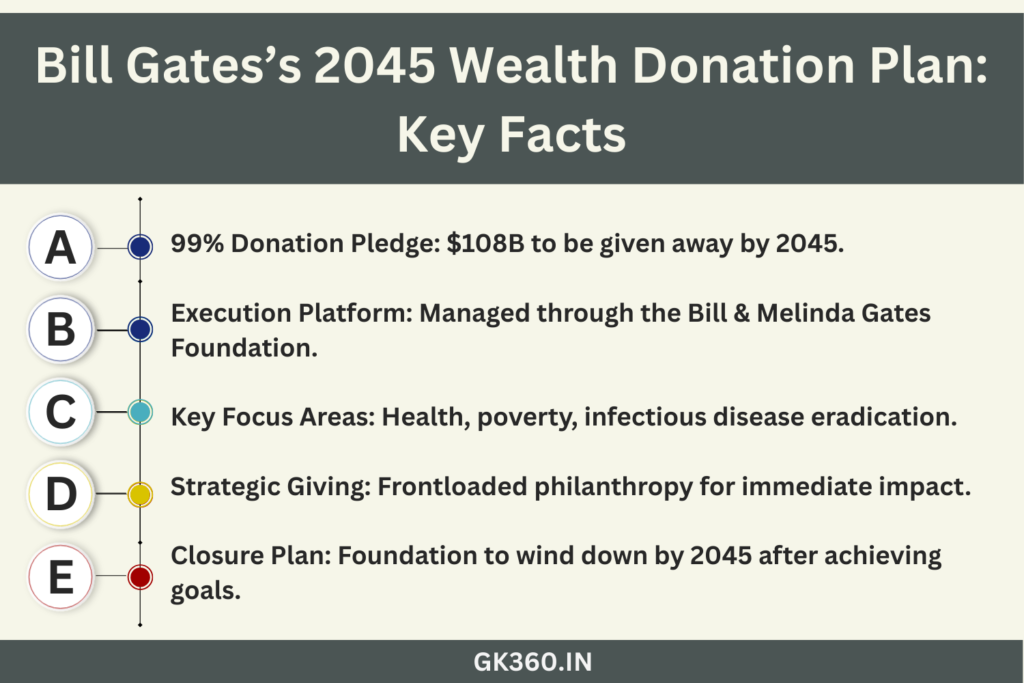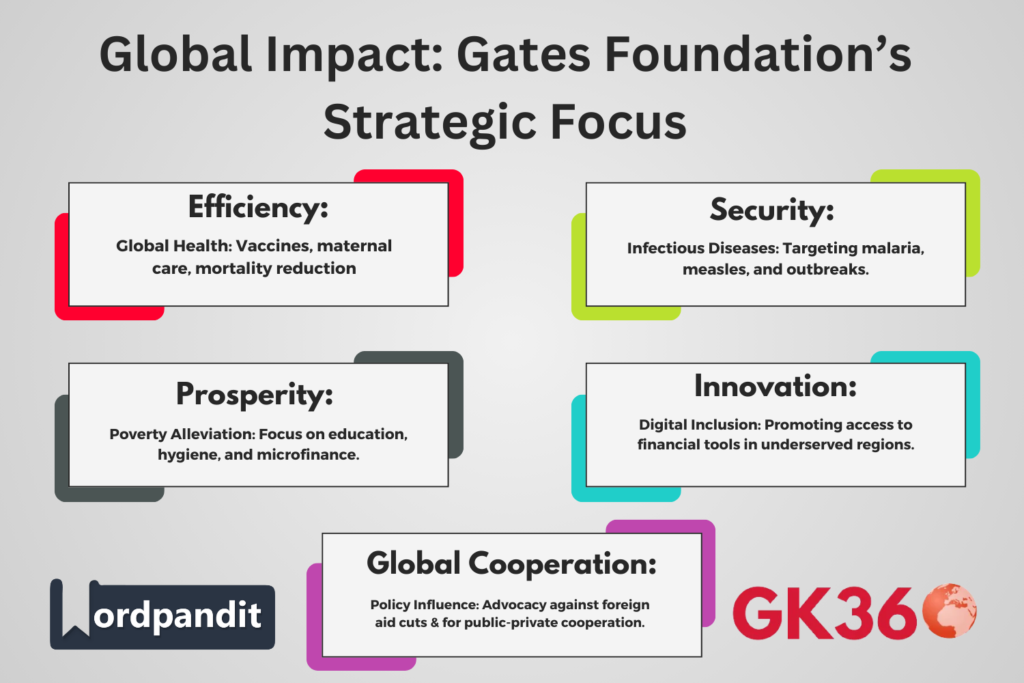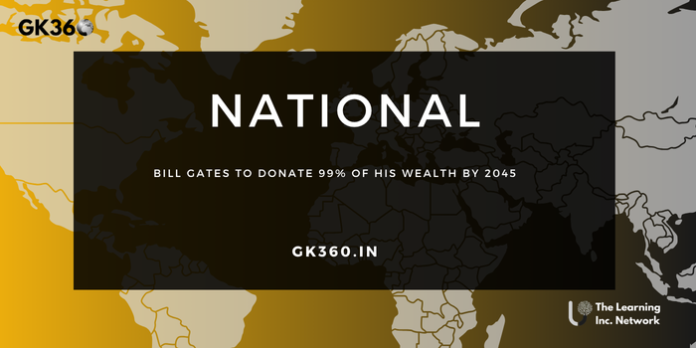Bill Gates to Donate 99% of His Wealth by 2045: Philanthropy, Legacy & Global Impact
Introduction: Why Gates’s 2045 Wealth Pledge Matters Now
Billionaire philanthropist and Microsoft co-founder Bill Gates has announced his intention to donate 99% of his wealth by 2045, marking one of the most ambitious acts of giving in modern history. Valued at over $108 billion, Gates’s fortune will be strategically channeled through the Bill & Melinda Gates Foundation, focusing on global health, poverty eradication, and the fight against infectious diseases.
As global crises mount—from pandemics to economic inequality—Gates’s announcement serves as a powerful signal of urgent philanthropic responsibility. His pledge underscores a growing movement among the world’s ultra-wealthy to redirect wealth toward the betterment of humanity, setting a new bar for charitable legacy.

Table of Contents
- Introduction
- Overview of the 99% Donation Commitment
- Gates Foundation Strategy: Health, Poverty, and Disease
- What Inspired Bill Gates: The Carnegie Model
- Long-Term Impact on Global Philanthropy
- FAQs About Bill Gates’s 2045 Philanthropy Pledge
- Conclusion: Philanthropy as a Legacy of Action
Overview of the 99% Donation Commitment
Bill Gates’s commitment represents more than just financial generosity—it’s a strategic philanthropic blueprint with a clear timeline and measurable objectives. Here are the key elements:
- Donation Goal: 99% of current wealth (~$108 billion)
- Timeline: By 2045, over the next 20 years
- Additional Contributions: An estimated $200 billion will be donated incrementally
- Focus Areas: Healthcare, global development, poverty alleviation, and disease eradication
- Execution Platform: Primarily through the Bill & Melinda Gates Foundation
- Endgame: The foundation will wind down operations by 2045, having achieved its donation mandate
This is not merely a legacy project. Gates envisions a living, impactful philanthropy, where the bulk of his fortune directly addresses today’s most urgent global challenges—not decades later, but now.
Gates Foundation Strategy: Health, Poverty, and Disease
Founded in 2000, the Bill & Melinda Gates Foundation has grown to become one of the most influential nonprofit organizations globally. With Gates’s new pledge, the foundation’s mission and outreach will expand significantly in three strategic directions:
Global Health Programs
The foundation will continue its aggressive efforts to eliminate preventable diseases, particularly in low-income regions. Initiatives include:
- Expanding access to life-saving vaccines
- Improving maternal and child healthcare
- Supporting healthcare innovation to reduce mortality in marginalized communities
By scaling partnerships with governments and NGOs, the Gates Foundation hopes to narrow the global health equity gap.
Infectious Disease Eradication
Combating the spread of infectious diseases remains central to the foundation’s work. Future investments will target:
- Malaria, measles, and other deadly outbreaks
- Development of advanced diagnostic and vaccine technologies
- Strengthening of local healthcare systems to ensure resiliency
Gates has repeatedly emphasized that ending infectious disease cycles is key to enabling prosperity in vulnerable regions.
Poverty and Economic Development
Beyond health, the foundation is committed to eradicating extreme poverty and creating sustainable economic pathways. Core strategies include:
- Investments in education, especially for girls and rural populations
- Access to clean water, sanitation, and hygiene infrastructure
- Promoting digital and financial inclusion in underbanked communities
- Empowering local economies through microfinance and innovation
This multi-pronged approach positions the foundation as a central driver in the fight for equity and human development.
What Inspired Bill Gates: The Carnegie Model
Bill Gates credits much of his philanthropic philosophy to Andrew Carnegie, the 19th-century steel magnate who laid the groundwork for modern philanthropy. Carnegie believed that “the man who dies rich dies disgraced,” advocating that extreme wealth should serve a greater public good during one’s lifetime.
Gates has often cited this ethos as his guiding principle, noting that wealth should be actively used to solve pressing societal problems, not passively preserved. This mindset has influenced not only the structure of his giving but also the urgency and transparency behind his charitable actions.
His involvement in founding the Giving Pledge—a campaign urging billionaires to donate most of their wealth—further demonstrates his commitment to inspiring systemic change among the global elite.
Long-Term Impact on Global Philanthropy
Urgency of Gates’s Timeline
Unlike traditional philanthropic models that span generations, Gates emphasizes the need for swift, high-impact intervention. The rationale: global crises—like climate change, pandemics, and poverty—cannot wait.
By frontloading his giving over the next two decades, Gates hopes to maximize social return on investment during a period when his wealth can do the most good. He has explicitly stated that delaying philanthropic action risks diminishing its effectiveness.
Influencing Billionaire Giving Culture
Gates’s pledge is expected to reshape global attitudes toward wealth and responsibility. As one of the most visible and successful figures in business, his commitment challenges peers to:
- Rethink the legacy of wealth accumulation
- Embrace accountable and strategic philanthropy
- Contribute to solving large-scale human problems rather than creating isolated impact
This ethos mirrors the goals of the Giving Pledge, which now has over 200 signatories, including Warren Buffett, Elon Musk, and MacKenzie Scott.
Transparency, Criticism, and Accountability
Despite the overwhelmingly positive reception, Gates’s philanthropic journey is not without its critics. Key concerns include:
- Influence of Private Wealth: Some argue that mega-foundations like Gates’s exert undemocratic influence over public policy, especially in global health and education.
- Lack of Oversight: Large foundations often operate with limited regulatory scrutiny, raising questions about priorities and accountability.
- Tax Benefits: Philanthropists receive substantial tax advantages, which critics say should be more transparent and equitable.
Gates has acknowledged these issues and emphasized that transparency is critical. The Gates Foundation routinely publishes:
- Detailed financials and grants
- Impact assessments
- Strategy updates in key focus areas
By doing so, it aims to set a new standard of trust and openness in global philanthropy.
Gates’s Stand on Foreign Aid Cuts
In recent years, Bill Gates has spoken out against foreign aid reductions by several developed nations. He described these cuts as “devastating for the world’s poorest”, especially in regions that rely on foreign assistance for:
- Disease control
- Food security
- Education and clean water programs
Gates argues that public and private collaboration is essential, and philanthropic efforts cannot fully replace government-level support. His plea to global leaders: Reinvest in foreign aid to foster long-term global stability.

FAQs About Bill Gates’s 2045 Philanthropy Pledge
- What is Bill Gates’s 2045 philanthropy pledge?
Gates has committed to donating 99% of his wealth by 2045, primarily through the Bill & Melinda Gates Foundation, to address global health, poverty, and infectious diseases. - How will the money be used?
Funds will support healthcare initiatives, disease eradication, economic development, and educational access across underserved regions. - Why did Gates choose 2045 as the target year?
Gates believes that concentrated giving during his lifetime can deliver the most effective impact, particularly amid current global crises. - What is the Giving Pledge?
Co-founded by Gates and Warren Buffett, the Giving Pledge encourages billionaires to donate the majority of their wealth to charitable causes during their lifetimes or in their wills. - Is the Gates Foundation transparent in its operations?
Yes. The foundation regularly shares grant data, financial reports, and strategic updates on its website to ensure public accountability.
Conclusion:
Bill Gates’s unprecedented decision to give away nearly all of his fortune by 2045 is more than personal generosity—it’s a powerful statement of social responsibility, ethical legacy, and transformative action.
His approach redefines how wealth can serve humanity: not as a status symbol, but as a tool for solving existential global problems. As his donations accelerate in the coming years, they will influence not only the health and welfare of millions—but also how the world reimagines the role of billionaires in global development.
Key Takeaways Table
| Aspect | Details |
| Donation Commitment | Bill Gates pledges 99% of his wealth (~$108B) to philanthropy by 2045. |
| Execution Channel | Primary implementation through the Bill & Melinda Gates Foundation. |
| Focus Areas | Global health, infectious disease control, poverty alleviation, economic development, and education. |
| Inspiration | Influenced by Andrew Carnegie’s belief that wealth should serve public good during one’s lifetime. |
| Giving Pledge | Gates co-founded the Giving Pledge to inspire other billionaires to donate majority of their wealth. |
| Transparency Measures | Regular release of financials, impact reports, and strategic updates to ensure accountability. |
| Global Impact | Influences billionaire culture, advocates for responsible wealth usage, and counters foreign aid cuts through public engagement. |





